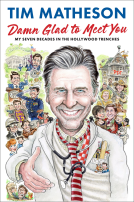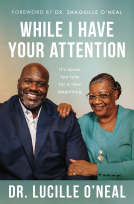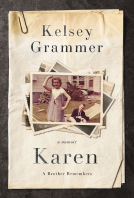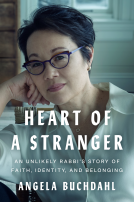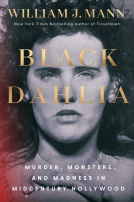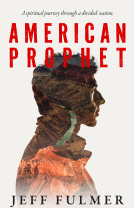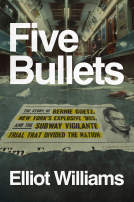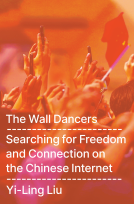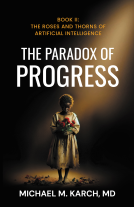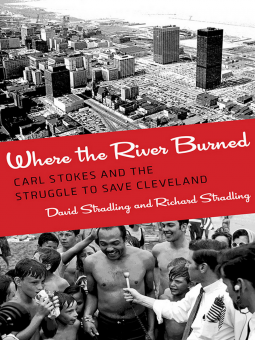
Where the River Burned
Carl Stokes and the Struggle to Save Cleveland
by David Stradling; Richard Stradling
This title was previously available on NetGalley and is now archived.
Send NetGalley books directly to your Kindle or Kindle app
1
To read on a Kindle or Kindle app, please add kindle@netgalley.com as an approved email address to receive files in your Amazon account. Click here for step-by-step instructions.
2
Also find your Kindle email address within your Amazon account, and enter it here.
Pub Date May 07 2015 | Archive Date Mar 10 2015
Description
In the 1960s, Cleveland suffered through racial violence, spiking crime rates, and a shrinking tax base, as the city lost jobs and population. Rats infested an expanding and decaying ghetto, Lake Erie appeared to be dying, and dangerous air pollution hung over the city. Such was the urban crisis in the "Mistake on the Lake." When the Cuyahoga River caught fire in the summer of 1969, the city was at its nadir, polluted and impoverished, struggling to set a new course. The burning river became the emblem of all that was wrong with the urban environment in Cleveland and in all of industrial America.Carl Stokes, the first African American mayor of a major U.S. city, had come into office in Cleveland a year earlier with energy and ideas. He surrounded himself with a talented staff, and his administration set new policies to combat pollution, improve housing, provide recreational opportunities, and spark downtown development. In Where the River Burned, David Stradling and Richard Stradling describe Cleveland's nascent transition from polluted industrial city to viable service city during the Stokes administration.The story culminates with the first Earth Day in 1970, when broad citizen engagement marked a new commitment to the creation of a cleaner, more healthful and appealing city. Although concerned primarily with addressing poverty and inequality, Stokes understood that the transition from industrial city to service city required massive investments in the urban landscape. Stokes adopted ecological thinking that emphasized the connectedness of social and environmental problems and the need for regional solutions. He served two terms as mayor, but during his four years in office Cleveland's progress fell well short of his administration’s goals. Although he was acutely aware of the persistent racial and political boundaries that held back his city, Stokes was in many ways ahead of his time in his vision for Cleveland and a more livable urban America.
Advance Praise
"Where the River Burned exposes the
precarious role of cities in the evolving environmental agenda of the
late 1960s. David Stradling and Richard Stradling do a superb job of
showing how urban decline and the environmental movement were
intertwined. Carl Stokes provides an ideal lens through which to explore
these themes because of his perceptive understanding of that
relationship. The authors make clear that urban actors played an
important role in advancing the nation's
environmental movement by delivering Congressional testimony, staging
protests, and highlighting a distinctive set of urban problems."—Andrew
Hurley, University of Missouri–St. Louis, author of Beyond Preservation: Using Public History to Revitalize Inner Cities
"In Where the River Burned, David Stradling and Richard
Stradling offer fresh insight into the 'urban crisis' of the 1960s and
beyond by telling the story of Cleveland during the administration of
Carl Stokes, the first black mayor of a major U.S. city. Stradling and
Stradling argue that the environmental and urban problems of the Stokes
years were inseparable. Cleveland’s environmental woes—from pollution to
rats—contributed powerfully to the problems of depopulation,
neighborhood decay, violence, and racial strife. At the same time,
efforts to improve the urban environment were handicapped by the need to
address a host of other pressing problems. Where the River Burned
is a wonderfully written book that will change the way you think about
urban and environmental history."—Adam Rome, Unidel Helen Gouldner Chair
for the Environment and Professor of History and English at the
University of Delaware, and author of The Genius of Earth Day: How a 1970 Teach-In Unexpectedly Made the First Green Generation
"Where the River Burned is a penetrating analysis of
Cleveland's history of urban woes and how Carl Stokes, the city’s first
African American mayor, responded to howls of opposition from the city’s
polluting industries. An all-American story."—Antero Pietila, author of
Not in My Neighborhood
"What a fascinating story! Where the River Burned combines the
best of many worlds: environmental and urban history; captivating
writing and deep archival research; broad analysis of American society
and an engrossing portrait of an unsung but incredibly significant
political figure: Carl Stokes, the first African American elected mayor
of a major U.S. city. Once you read this book, how you think about
racism, poverty, economics, population changes, politics, and pollution
in American cities will change forever."—Brian Purnell, author of Fighting Jim Crow in the County of Kings
"David and Richard Stradling have produced an important work that notes
the centrality of environmental problems to the urban crisis of the
1960s and 1970s. Where the River Burned will make us seriously consider the vital connection between ecology and urban space."—Clarence Taylor, author of Reds at the Blackboard
Available Editions
| EDITION | Other Format |
| ISBN | 9780801453618 |
| PRICE | $29.95 (USD) |
Links
Average rating from 5 members
Featured Reviews
 Joseph S, Reviewer
Joseph S, Reviewer
Among the worst of them all is the 80 mile-long Cuyahoga. Some River! Chocolatey-brown, oily, bubbling with subsurface gasses, it oozes rather than flows. ~ Time Magazine
Where the River Burned: Carl Stokes and the Struggle to Save Cleveland by David Stradling and Richard Stradling is a history of Cleveland in the late 1960s. David Stradling is a professor of urban and environmental history at Cincinnati University. He earned his Ph.D. from the University of Wisconsin-Madison. Richard Stradling is an editor at The News & Observer in Raleigh, N.C.
I grew up in Cleveland in a Polish neighborhood in the 1960s and 1970s. My neighborhood was very ethnic with many of the older residents still speaking the language of the home country. I enjoyed growing up there and although I have not been back in over twenty-five years, Cleveland is still my city. What was so great growing up there? I would be hard pressed to say anything more than sentimental reasons. We had the worst school system in the state. We had a marginal football team and baseball team that never seemed to break 500. We used to fish for jumbo perch near off the 72nd Street pier, but pollution killed the fish. The steel mills and Municipal Light and Power seemed to darken the skies with pollution. But as kids, we played football and baseball on the red brick streets and there seemed to be something magical about growing up on Vineyard Avenue on the southeast side of town.
Yes, the Cuyahoga River did catch on fire in 1969. It was a major news outside of the city. Those in Cleveland knew the river had caught fire several times in the past. Cleveland grew fast and with fast growing cities there is rapid development and little planning until there are problems. Problems caught up to Cleveland in the 1960s.
Cleveland is now, and was then too, very segregated. Even in white neighborhoods it was segregated ethnically. The main problem, however, was black and white. Blacks were located in several poor areas of the city including Hough which was the site of rioting. Hough was at a time a very nice neighborhood, but people moved out, the tax base was reduced, businesses followed and eventually it became a ghetto. Race issues and poverty became a major problem for the city. One program with some success was the rat eradication program. The poorer areas of the city were heavily infested with rats.
Pollution was another major problem. I have memories as very young child of swimming in Lake Erie's Edgewater Park, before the pollution closed the beaches. Imagine a city on a lake, but without any water recreation because of the pollution and algae blooms. Coliform bacteria make the water unsafe for swimming and recreation. 1000/ml was the coliform limit that closed beaches. Some areas along the shore reached 110,000/ml. Mayor Carl Stokes wanted to open beaches again he fought to clean up the Cuyahoga and Lake Erie. He had some success, but nowhere near enough. The city came up with a plan to open beaches. Essentially an area (White City Beach) was sectioned off by pontoons and weighted plastic curtains. The area was treated with chlorine nightly, 350lbs/night, to keep the bacteria count low enough to open the beaches. Stokes and his staff were there to swim along with the public. This approach was called "a pool in the lake" and was something the city was quite proud of. In hindsight, this sounds rather ridiculous. Essentially it is dumping poison into a lake to kill other poisons. On the positive side, it did open portions of the lake to the public and was much cheaper than the billion plus dollars of cleaning up the lake -- Money that no one had.
Earthday plays a large role in this book also. The air pollution and water pollution were major problems. On the first Earth Day in 1970, Cleveland school children wrote the mayor about pollution. I was in kindergarten at the time and we drew posters that were going to be sent to the mayor. I drew a rocket, billowing smoke as it was taking off. After drawing and coloring it, I was told rockets used hydrogen and oxygen as fuel so it wasn't really pollution, but rockets were cool.
Where the River Burned concentrates its history on Mayor Carl Stokes terms as mayor. It was a critical time in the city's history and Carl Stokes was energetic and determined to fix the city. He seemed to be that rare honest person who cared more for his city than he did for politics. He was from that poverty stricken east side and he rose to become the first black mayor of a major US city. He reminds me of President Ford who walked into so many problems when he assumed office and diligently worked to fix them. It was a superhuman task in both cases, but the men put their duty ahead of personal gain. These were not only men of integrity, but politicians with integrity. Not perfect but they did their best. Stokes turned down a request from LBJ to come to Washington for an MLK memorial, Stokes, chose to stay in Cleveland in potential hot spots personally working to stop any violence or rioting. Compare that to the next mayor of Cleveland, Perk, whose wife turned down a request First Lady Pat Nixon, because the event was on her bowling night.
Yes, the joke about the river catching fire did get old, and yes I still get asked if the river really did catch on fire. It does not bother me anymore. In Cleveland, they fully recovered from it and take it in stride with a Burning River Pale Ale from a local brewery. The book for me is full of memories, places, and names of Cleveland's movers and shakers. It is a virtual time machine to my much younger days. This is an absolute read for any Cleveland native or those interested in urban pollution and the history of race issues and poverty. Simply outstanding.
Readers who liked this book also liked:
Scott Michael LeRette
Biographies & Memoirs, Christian, Parenting, Families, Relationships
Jeff Fulmer
General Fiction (Adult), Politics & Current Affairs, Religion & Spirituality
Michael M. Karch, MD
Computers & Technology, Nonfiction (Adult), Professional & Technical
